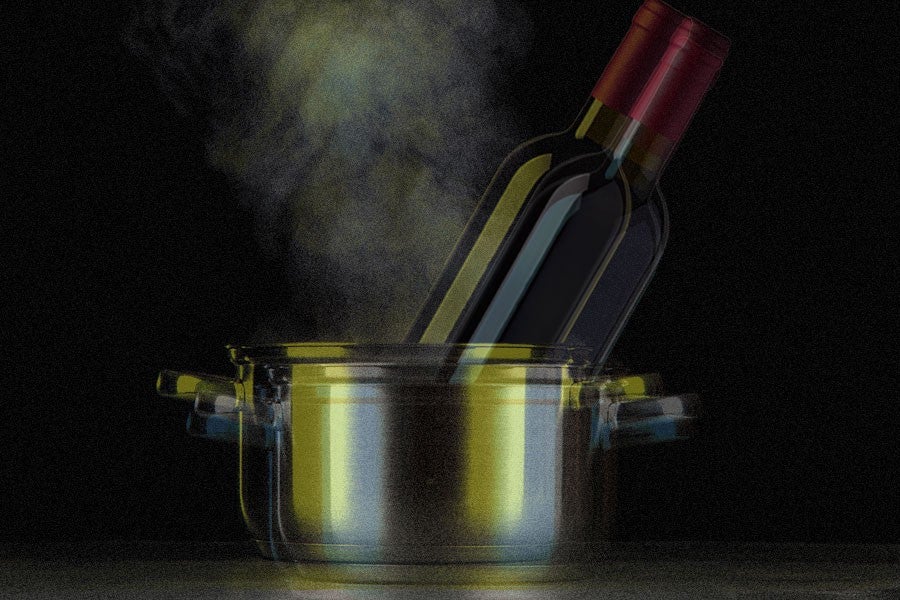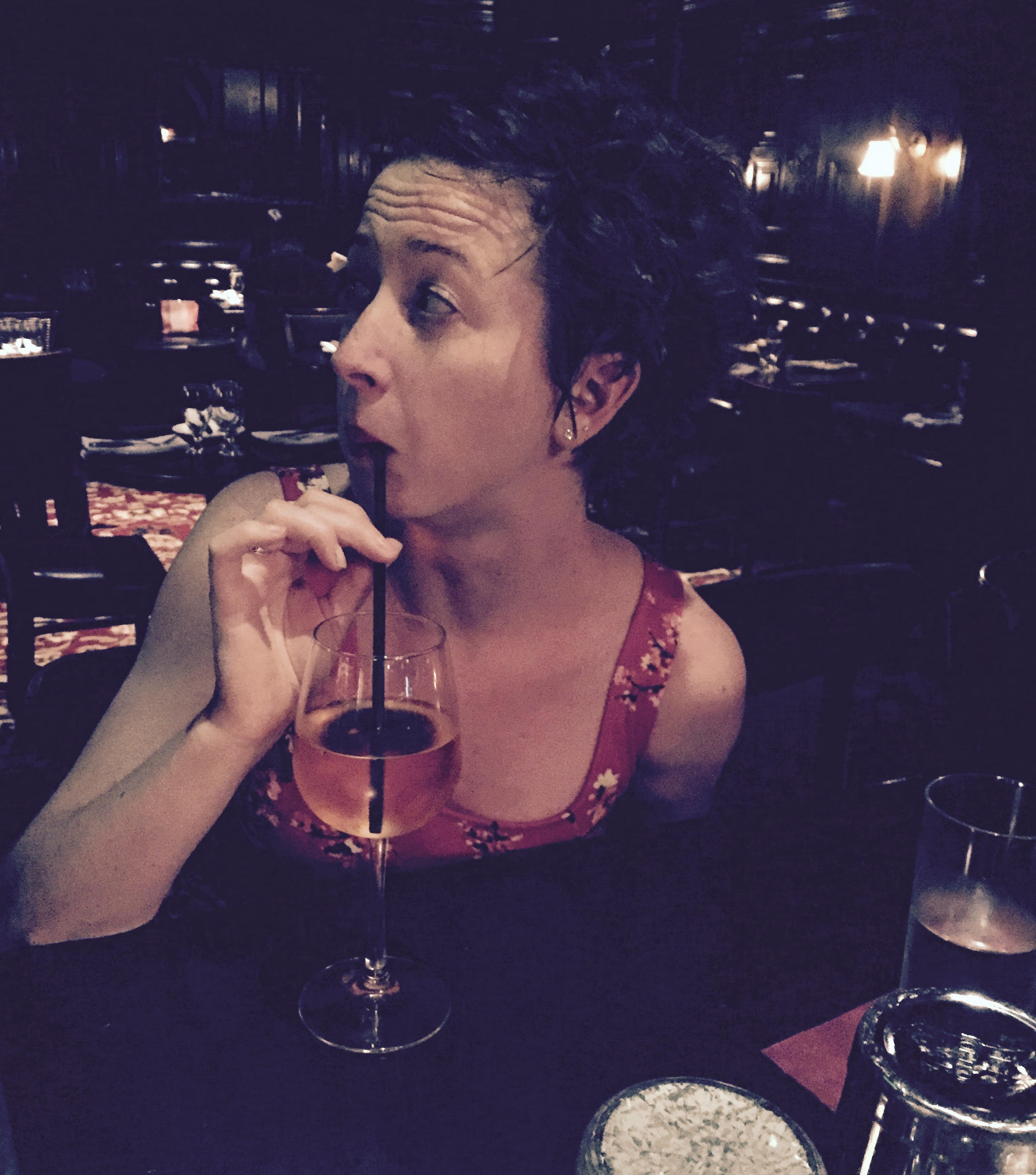There’s an old story, likely apocryphal, about a Russian tour guide (or maybe it was someone in Alaska) who took a group of tourists to Siberia in the dead of winter. Somehow, though, despite the guide’s expertise, they all got lost. “What do we do?” the frightened tourists cried. “Huddle for warmth?”
“Oh come now, do not fear,” the guide responded as she pulled out a flask of vodka. “This will keep us warm.”
She proceeded to open the flask, throw her head back and rip a hearty shot. But before she could pass the flask to the nearest tourist, she dropped into the snow.
Dead.
Because alcohol doesn’t freeze, the vodka was well below ice cold and it froze her from the inside out.
Now, that’s highly unlikely to have ever actually occurred, but drinking to stay warm in cold weather? That works, right? Coffee and whiskey (Irish coffee); tea, honey and whiskey (the hot toddy); rum, spiced butter and hot water (hot buttered rum); that weird glögg shit (kind of like mulled wine?) your grandmother always has around the house at Christmas — all of these things were designed to increase your body temperature and buzz.
Or is that urban legend, too?
We know what carbonation (gets you drunker, faster), fake sugar (also gets you drunker, faster) and caffeine (you guessed it — gets you drunker, faster) do to your buzz. And we worry endlessly about water impurities and the type and shape of ice we use in our drinks. But the same kind of hand-wringing never seems to occur when hot beverages are involved.
Yet that heat must do something to our booze. Does it get us drunker? Less drunk? Drunker faster? Slower? Anything different at all? And in a world where craft cocktails and wine snobs call for a certain kind of glass for a certain kind of response from a certain kind of drink, does the same hold true for heat?
The Common-Sense Answer
The science behind what drinking hot alcohol does to your buzz (and you) is frequently anecdotal. “I’ve never seen anyone get smashed on mulled wine,” says Fred Yarm, a Boston-based bartender and author of the cocktail books Drink and Tell and Drunk and Told. “But I’m pretty sure that’s because a lot of hot drinks are on the sweeter, richer side. So you don’t see people sit back and crush them all night.”
“The amount of alcohol you’re ingesting per beverage is about the same,” he continues, “but if you’re only going to drink hot drinks you get kind of tuckered out.”
I agree. When people order hot drinks from me, or when I’m drinking them myself, it’s almost always just one — the first of the night. The idea is that I’ll just get the chill off, warm up with something hot and boozy and then switch over to beer (or wine or whiskey or whatever).
Yarm has heard, though, that warm alcohol will be absorbed faster into your bloodstream through the lining of your stomach, and therefore hit you quicker, because it’s closer to your body temperature. Some basic biology and a quick poke around the internet will back up parts of this theory. For instance, students at the College of St. Benedict in Minnesota are warned in writing by their health and counseling center that “the body absorbs liquid at body temperature. Warm beer is closer to this temperature than cold beer, so it’s absorbed faster into the bloodstream.”
The ‘It’s-All-in-Your-Head’ Answer
Ever give someone a glass of soda water with a lime at a party and watch them “get drunk”?
No? Just me?
Well, it works. The placebo effect is a very real thing when it comes to drugs (and alcohol is most certainly a drug), as is Timothy Leary’s concept of “set-and-setting.”
Leary, one of the leading figures of 1960s counterculture and a big advocate for the use of psychedelic drugs, was a radical, bit of a narcissist and probably slightly unhinged by the mid-1970s. But his philosophy that the effects and experience of a drug depend largely on the person ingesting them and the environment/headspace they’re in at the time continues to be born out by today ravers, stoners and day-trippers throughout the world.
Which brings us to how you feel when you drink hot alcoholic beverages.
“So much of how you experience your buzz has to do with the culmination of the situation in which you’re drinking,” says Maggie Campbell, head distiller and vice president of Privateer Rum in Ipswich, Massachusetts. “If you’re out in the sun all day and have a cold beer, it hits you much differently than just having a cold beer at dinner.”
“When I’m drinking warm drinks, it’s a really comfy session,” she adds. “You’re relaxed; you’re celebrating. And for me, that brings on a different buzz than just an everyday glass of wine.”
The ‘What-to-Drink-When-You-Want-a-Hot-Drink’ Answer
The way spirits behave in hot drinks is, according to Campbell, firmly rooted in hard science. “Alcohol wants to become a vapor,” she says. “So when you drink a warm drink, the spirit has started to vaporize in the heat.”
Which, she adds, makes the quality of spirit that goes into your mug super important — high-quality spirits give off fewer abrasive vapors because they contain hardly any of what distillers call “heads.”
Heads are things you don’t want to drink — like acetone, acetate and acetaldehyde, which are byproducts of fermentation but removed during the distillation of quality spirits. Heads smell and taste harsh and will you give you a horrific hangover. Acetone, after all, is the main ingredient in nail polish remover.
“Spirits with a high head count taste a little unpleasant in hot drinks because the heat will excite those really volatile molecules,” she says.
When it comes to making hot drinks, then, you should be using well-aged spirits with richer flavors like Old Monk rum, a spicy Indian dark rum; a nice caramelly bourbon like Jefferson’s; or a zesty rye like Michter’s. By using older, more complex spirits than you’d typically think of blending with strongly flavored mixers like coffee or cider, you’ll avoid encountering evaporated heads, which might not mess with your buzz or contribute to your hangover, but can make your drinking experience less enjoyable since you’ll be huffing acetone with every sip. (Again, you remove nail polish with that shit.)
And that’s not going to warm anybody’s soul.

